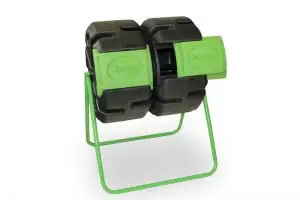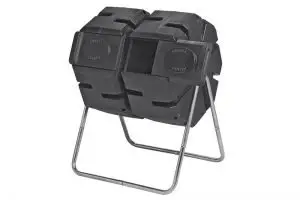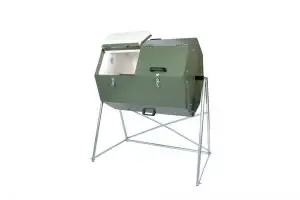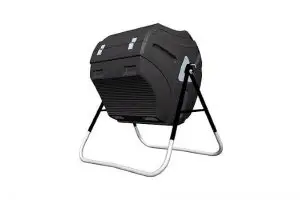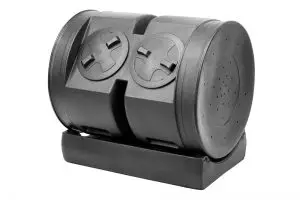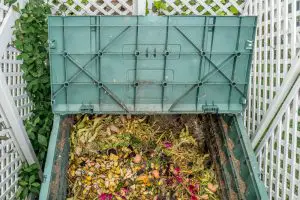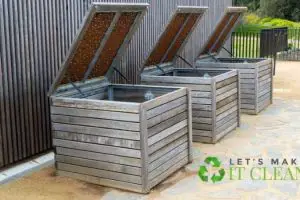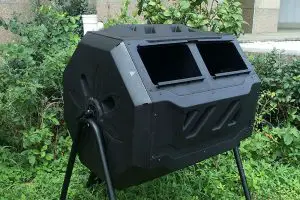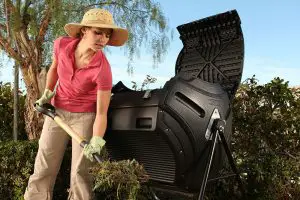Are you lost on the best way to use grass clippings for composting? Apart from using the clippings for composting, you can also use them as mulch in your garden.
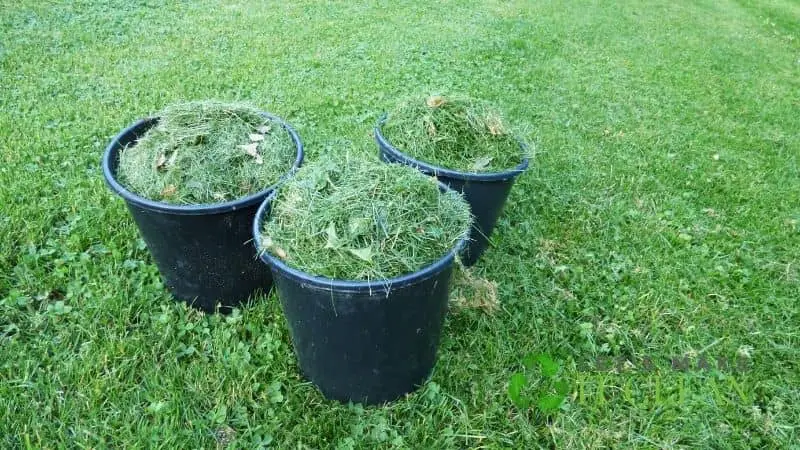
Here is a guide on how you can use clippings for composting and mulching.
Quick Navigation
Do you have excess grass clippings and yard waste on your lawn?
Composting grass clippings is logical, and it is an excellent way of getting compost that is rich in nitrogen. Combine that with the fact that several states in the US have banned grass clippings from landfills.
That leaves you with no choice but to compost the clippings in your yard when they get to a particular frass height.
Recycling grass clippings is also an essential part of lawn care. If the grass clippings are left on the lawn, they feed the soil microbes with nitrogen fertilizer as they have a high nitrogen content.
By taking care of your lawn nitrogen fertilizer needs, grass clippings make sure your lawns are green and healthy at all times.
What to Know Before Composting Lawn Grass
Before putting grass clippings in your compost pile, it’s good to know that you don’t have to compost them. Gathering the grass clippings to compost can be tiring.
However, you can use lawnmowers with a bagging attachment, making it easy to collect the mulching clippings.
If you mow the grass at the proper height and frequency, the grass will decompose naturally, which adds nutrients to the soil and removes the need to add fertilizer to your lawns.
Recycling clippings to your lawn doesn’t contribute to thatch.
Apart from composting the grass clippings, you can also use them as garden mulch.
Grass clippings are green materials that add nitrogen to your compost. They are soft and don’t have a sturdy structure. Thus, if you don’t use them properly in the compost pile or heap, they turn into a mat that is difficult for air and water to penetrate.
Regular mowing will reduce the need for collecting clippings. You should avoid cutting more than a third of the grass height at any time.
Also, the clippings’ organic matter comes in handy in soil amendment, whether it is heavy clay, sandy, or loam on organic matter. It helps to improve the soil structure making it seamless for the plants’ root system to spread.
What to Do With Clippings After Mowing
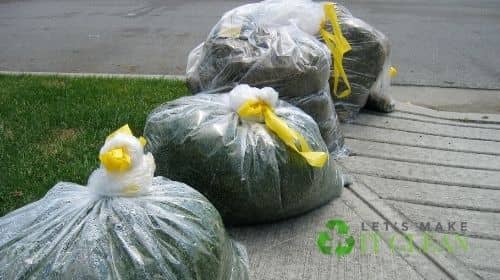
Grass clippings are part of your lawn care, and you can bag the clippings or recycle them into the lawn.
You don’t have to collect the clippings that are an inch or less in length. It will help if you leave them on the lawn, and they’ll filter to the soil surface and decompose.
You should remove the longer grasses as they can shade or smother the grass beneath, which will damage your lawn.
You shouldn’t throw away bagged grass clippings as yard waste. Alternatively, you should use them as garden mulch or compost them.
Is Grass Clippings Good for Composting in a Compost Pile?
Should You Have Grass Clippings in Your Compost Pile?
Fresh grass clippings and other lawn clippings are types of green organic matter. Therefore, they are a source of nitrogen, which is required for a proper composting process.
A compost pile needs a proper balance between brown and green composting ingredients to decompose properly. If you don’t get the ratio right, you might end up with an unpleasant smell.
As such, when you add lawn trimmings and grass, you also need to make sure you add brown materials such as dry leaves, shredded newspapers, etc
But if you have allowed the grass clippings to dry before putting them in the compost pile, you treat them as brown material.
Many gardeners have a concern when they want to compost grass sprayed with herbicide. If you are composting residential lawns, then the herbicide used is expected to break down within a few days.
It may not have effects when you use the compost on plants. However, if you are getting non-residential grass clippings from a golf course or farm, the herbicides may take weeks or even months to break down.
Do Clippings Increase Thatch?
The thatch layer results from undecomposed organic matter that forms between the soil surface and the growing vegetation.
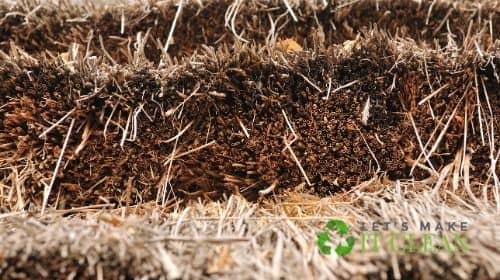
Yard trimmings don’t contribute to thatch. They degrade fast and don’t accumulate on the lawn surface. Some clippings and grass blades may contain wiry stems that take longer to degrade, but they don’t contribute to thatch.
Thatch comes about due to low soil oxygen levels that may be caused by compacted or waterlogged soils.
It also comes about as a result of excessive nitrogen fertilization and vigorous grass varieties.
Using Lawn Clippings as Mulch
According to the University of Minnesota Extension, it’s possible to use grass clippings as mulch in your garden. Homeowners can use grass clippings as mulch around flower beds, shrubs, and vegetables to retain moisture and limit weeds’ growth.
Mulch from the lawn also helps maintain soil temperature, and they also leach nutrients to the soil, which enhances the soil condition.
Apart from using grass clippings in a compost bin or compost piles to make compost, you can use them as mulch but with conditions including:
- Apply a thin layer of the clippings that are not more than 1 to 2 inches. This helps to make sure that water and air still get through to the plants.
- You should use dry clippings instead of fresh clippings. The green clippings can mat, reducing oxygen and water to get to the soil. If the oxygen is limited, anaerobic decomposition can take place, which will lead to unpleasant odors.
- Don’t use clippings if they have been treated with herbicides for broadleaf weeds or dandelions as the herbicide may be harmful to your plants.
How Long Does It Take Grass Clippings to Compost?
How long it will take the clippings and other yard waste to compost depends on various factors.
For instance, you have to maintain a proper ratio of green materials, including grasses, coffee grounds, and other green plant materials.
They should balance with carbon-rich brown materials such as straw and dry leaves. If there is no proper balance, the composting process will take longer, or it may not happen.
You also need to turn the compost from time to time to ensure proper aeration of the compost. It’s so easy if you use a compost-turner. Turning the compost also gets the compost materials to the center of the pile where there is more heat.
With proper management, the compost can be ready in two to four months. The timing will vary depending on the frequency of turning and watering.
Conclusion
Composting grass clippings is an excellent way of recycling the clippings after mowing. You don’t have to collect the lawns’ clippings as they will decompose and add nutrients to the soil.
If you use the clippings during composting, ensure you strike a balance between the green materials and the brown materials.
Having the right ratio will lead to healthy compost and will also speed up the composting process. Apart from using it as compost, green clippings are also ideal for use as mulch.

